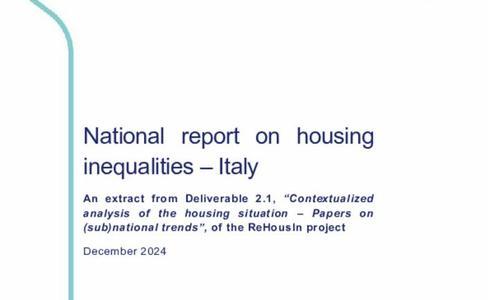National report on housing inequalities – Italy
An extract from Deliverable 2.1 “Contextualized analysis of the housing situation – Papers on (sub)national trends”
Italy is a home-ownership dominated country with high and growing wealth inequality and more moderate income inequality. In 2011, 72% of the dwellings had been built before the 1980s, when minimum energy-efficiency rules were required by the building code. The tenure composition has shifted in the recent period, with owner-occupation growing from 68% in 1991 to 77% in 2021 and rental tenure decreasing from 25% in 1991 to 17% in 2021. The share of public housing shrank from 5.8% in 1991 to 3.6% in 2021, however, the segment still constitutes around 20% of the rental stock. Housing costs tend to be a larger burden for poorer households residing in rental tenure, and more so in bigger cities than in intermediate and less dense areas. EU-SILC data show a decrease in the share of overburdened households in those categories, especially in recent years, which can be linked to the introduction of a minimum income scheme (Reddito di cittadinanza), a support instrument for households in need, which has meanwhile been abolished.

Publication date: